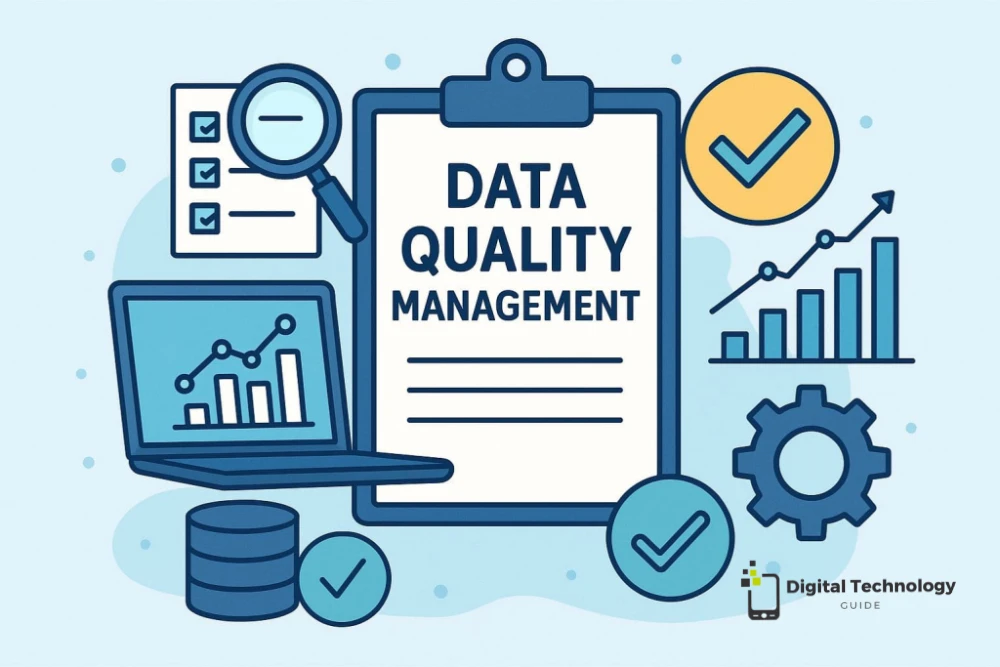If you’ve ever stumbled upon the term YIDQUltinfullMins inside a data quality platform, you might have thought it was just random letters strung together. But this setting is actually one of the most important parts of Informatica Data Quality (IDQ) and similar tools.
In this guide, I’ll break down what is YIDQUltinfullMins means, why it matters, and how you can configure it to boost performance in your data quality processes.
Table of Contents
What is YIDQUltinfullMins?
YIDQUltinfullMins (sometimes written as IDQ Ultinfull Mins) is a configuration parameter that manages:
- Processing intervals for data quality checks
- Resource allocation across validation jobs
- Timeout settings for complex operations
- Timing coordination between multiple modules
Think of YIDQUltinfullMins as a data quality management engine—a tool that ensures accuracy, consistency, and reliability when managing large volumes of information. Whether you’re working in analytics, business intelligence, or cloud platforms, understanding this system can help you achieve cleaner, smarter data pipelines.
Breaking down the name:
- Y → system or platform identifier
- IDQ → Informatica Data Quality (though used in other tools too)
- Ultinfull → “ultimate/full” execution cycle
- Mins → minutes (timing configuration)
Why YIDQUltinfullMins Matters
When misconfigured, YIDQUltinfullMins can either slow down your data quality operations or overload your system. Configured correctly, it can cut job times dramatically.
Example: In a 2022 data migration project, adjusting YIDQUltinfullMins reduced processing time from 8 hours to 90 minutes.
How YIDQUltinfullMins Works
At its core, YIDQUltinfullMins uses a rules-based validation engine that identifies, flags, and corrects data discrepancies in real time.
- Controls intervals for validation checks
- Balances CPU and memory allocation
- Prevents timeouts during heavy processing
- Synchronizes different validation modules
Real-World Uses
- Banks → speed up daily compliance checks
- Hospitals → validate patient records during system updates
- E-commerce → optimize product catalog checks during peak traffic
Common Configuration Challenges
Like any powerful tool, YIDQUltinfullMins has its hurdles. The most common issues include:
- Complex setup for multi-environment deployments
- Inconsistent rule application across datasets
- Performance slowdowns with very large data volumes
- Lack of documentation in certain legacy versions
- Set It and Forget It → Old parameters don’t adapt to growing data volumes.
- Over-Optimization → Too aggressive tuning causes CPU spikes, timeouts, or unstable jobs.
Signs of Misconfiguration:
- High CPU usage when idle
- Repeated job failures or restarts
- Inconsistent completion times
Note: These challenges can frustrate first-time users. But the good news? Most can be solved with structured planning.
Best Practices for Configuration
To maximize success, follow these proven best practices:
1. Analyze Data Patterns
- Peak loads (daily, weekly, seasonal)
- Growth trends (12–18 months)
- Data complexity (rules, sources, integrations)
2. Configuration Strategy
- Start conservative → adjust gradually
- Monitor logs and CPU/memory usage
- Test in stages, not in production directly
- Leave 20–30% headroom for growth
3. Infrastructure Constraints:
- Available processing power during different time windows
- Network bandwidth limitations
- Storage I/O capacity
Troubleshooting YIDQUltinfullMins
When something goes wrong, here’s a quick troubleshooting checklist:
| Problem | Fix |
|---|---|
| Jobs timing out | Increase interval & check bottlenecks |
| Erratic start/stop | Review schedule conflicts |
| System slowdown | Spread load more evenly |
Diagnostic Steps:
- Check logs for timing errors
- Monitor CPU/RAM usage
- Validate syntax (avoid typos)
- Run test batches
- Compare results with baseline
Platform Considerations
One of YIDQUltinfullMins biggest strengths is how well it integrates with modern ecosystems. It works alongside:
- Informatica IDQ → granular timing control
- Talend → integrated with job scheduling
- IBM InfoSphere → tied to DataStage
- MS Data Quality Services → SQL-based
- Tableau
- Power BI
By connecting YIDQUltinfullMins with these tools, businesses create end-to-end pipelines where quality checks are embedded at every stage.
Cloud vs On-Premise:
- Cloud = auto-scaling, flexible testing, but higher costs & latency risks
- On-prem = stable but less adaptive
Future of YIDQUltinfullMins
As organizations embrace AI, real-time analytics, and cloud-native systems, YIDQUltinfullMins is expected to evolve. Key future trends include:
With AI and ML integration, platforms will soon:
- Auto-adjust timing based on past data
- Predict resource allocation needs
- Dynamically optimize job intervals
Measuring YIDQUltinfullMins Success
How do you know it’s working? Track these metrics:
- Efficiency → faster completion times, fewer timeouts
- Data Quality → higher coverage, lower error rates
- Business Impact → accurate reports, faster insights
Final Thoughts
Understanding what is YIDQUltinfullMins is key to running efficient data quality operations, it becomes a powerful ally for data accuracy, efficiency, and compliance. From implementation to troubleshooting, following best practices ensures you unlock its full potential.
If you’re just getting started, begin small, document everything, and integrate YIDQUltinfullMins with your existing data stack. With the right approach, this system can transform your organization’s data management strategy for years to come.
FAQs on YIDQUltinfullMins
Q1: What is YIDQUltinfullMins in Informatica?
It’s a timing and optimization parameter that manages data quality management, ensuring accuracy, consistency, and reliability execution intervals.
Q2: How do I configure it properly?
Start with conservative values, monitor job performance, then tune incrementally.
Q3: What happens if it’s misconfigured?
Expect slow jobs, timeouts, and resource conflicts.
Q4. Can YIDQUltinfullMins integrate with cloud platforms?
Yes, it integrates with popular cloud warehouses like Snowflake, BigQuery, and Redshift, as well as ETL and BI tools.
Q5. How do I troubleshoot common YIDQUltinfullMins issues?
Start by checking rule conflicts, error logs, and system patches. Testing with sample data also helps isolate issues.
Q6. What are the future trends of YIDQUltinfullMins?
Expect more AI-driven automation, real-time monitoring, and cloud-native scalability in future releases.
Also Read:

